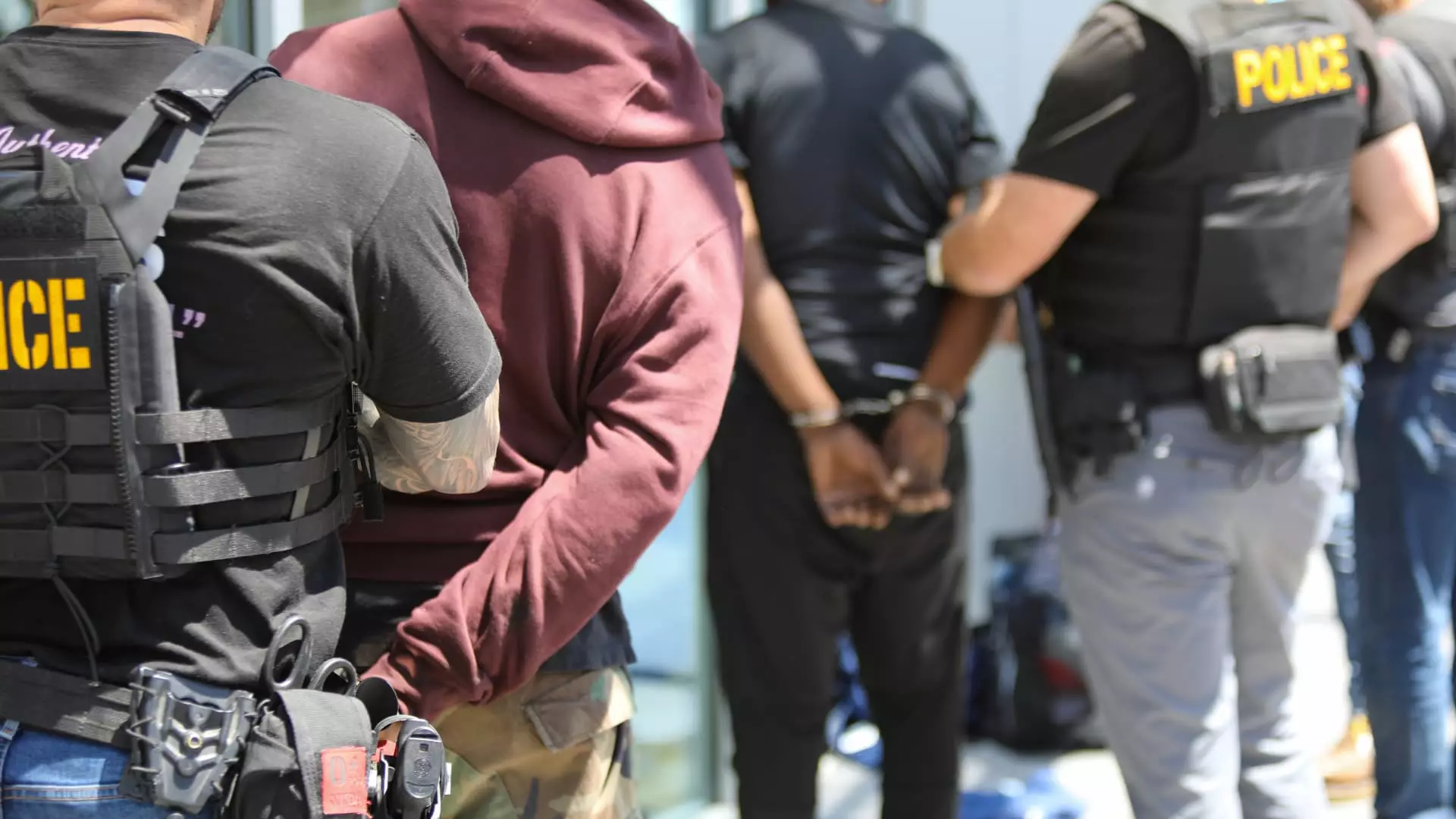In a groundbreaking initiative unlike any other, law enforcement agencies across the United States recently launched a synchronized operation targeting organized retail crime, culminating in hundreds of arrests across 28 states. Spearheaded by the Cook County regional organized crime task force in Illinois, this ambitious endeavor saw participation from over 100 jurisdictions and numerous national retailers, such as Home Depot, Walgreens, and Target. This monumental effort aims to combat a scourge that has been wreaking havoc on the retail sector—one that threatens not only the profitability of businesses but also the safety and satisfaction of consumers.
Organized retail crime is more than just petty theft; it is a well-orchestrated affair where organized groups exploit the loopholes in legal systems to maximize their gains. Every year, more retailers fall victim to this alarming trend. Reports indicate that in 2023, incidents of shoplifting surged by a staggering 93% compared to 2019, accompanied by a near 90% increase in dollar losses. Amid this growing crisis, the actions of Sheriff Tom Dart resonate deeply: “When you give specific focus to a crime, it reverberates.” Those words encapsulate the urgency and seriousness that have been sorely lacking in addressing this ongoing issue.
Legal Loopholes and Increased Accountability
However, even amid this wave of arrests, the question must be asked: Are we truly prepared to confront the systemic problems that have allowed organized retail crime to escalate? The lack of stringent felony thresholds in various states has enabled criminals to return to their nefarious activities with minimal repercussions. For instance, Cook County State’s Attorney Eileen O’Neill Burke has placed an emphasis on pursuing felony retail theft charges more aggressively since her appointment, lowering the threshold for felony charges to stolen goods valued over $300.
Such reforms should have been adopted long ago, and critics are right to highlight the delayed response from lawmakers. It begs the question: why did it take a coordinated effort for prosecutors to recognize the need for tougher sentencing? The previous threshold of $1,000 was an invitation for thieves to escape the full consequences of their crimes. While O’Neill Burke’s efforts mark a significant development in tackling this issue, they raise the broader issue of accountability—who’s genuinely responsible for letting this situation fester for so long?
The Role of Collaboration in Prevention
One of the most striking aspects of the recent crackdown is the collaboration forged between retailers and law enforcement agencies. The National Organized Retail Crime Blitz has awaken the industry to the importance of joining forces against a common adversary. Dan Petrousek, Senior Vice President of Loss Prevention at Ulta Beauty, underscored the significance of sharing intelligence and resources among participating entities. Such partnerships allow stakeholders to leverage collective insights and strategies to dismantle crime networks.
Yet, while collaboration offers a clear path forward, relying solely on reactive measures isn’t enough. The retail community must establish proactive strategies aimed at preventing organized crime before it manifests. This includes investing in technology that can help deter crimes, as well as fostering a culture of vigilance among employees. The mere act of employees being aware of their surroundings can serve as the first line of defense against theft.
A Public Responsibility in Tackling Theft
Consumers bear an unwitting responsibility as well. Public complacency surrounding this issue can embolden criminals, thus escalating the crisis. When thefts go unreported or unchallenged, it signals to would-be thieves that they will not face real consequences. It’s incumbent on consumers to acknowledge the impact that organized retail crime has on their shopping experiences. Rising prices, reduced product availability, and staff layoffs follow the trail of increased theft, echoing a disturbing reality that extends beyond the walls of the retail establishment.
The recent nationwide crackdown signals a hopeful shift in the battle against organized retail crime, yet it serves as a wake-up call for all stakeholders involved. The convergence of law enforcement and retail is just one piece of a complex puzzle that must include legislative action, technological advancements, employee training, and proactive consumer awareness. The fight against retail crime is far from over; it demands ongoing commitment and vigilance. In a society striving for justice and fairness, we cannot afford to ignore the stakes involved.


Leave a Reply